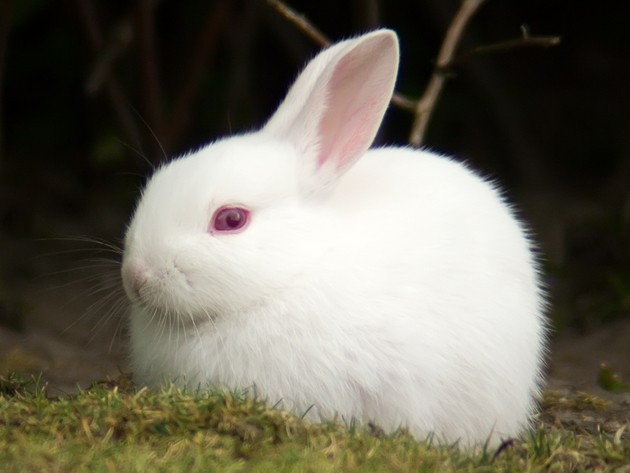A homozygous individual is one who possesses two equal alleles of a gene for a given characteristic. A heterozygous individualon the other hand, possesses two different alleles for the same gene.
When we speak of homozygous or heterozygous, we are referring to the genetic composition (genotype) relating to a specific character. Thus, an individual may be homozygous for one gene and heterozygous for another.
The genes are segments of DNA that contain the information necessary to determine specific characteristics of a living being. The same gene can have several alternative formsknown as alleles. For example, the gene that determines coat color in rabbits (gene C) can have several alleles: brown, albino, chinchilla e Himalaya. However, each rabbit can only have two allelesone inherited from each parent.
During the fertilizationa female sex cell (ovum) and a male sex cell (sperm cell) fuse, giving rise to a zygote containing the complete genetic load of the species. Thus, each individual inherits one allele from the father and one allele from the mother. for each gene. In humans, it is estimated that there are approximately 21 000 genes different.
| Homozygous | Heterozygous | |
|---|---|---|
| Definition | Possesses two equal alleles of a gene. | Possesses two different alleles of a gene. |
| Origin of alleles | Progenitor origin | Coming from the parents |
| Types | ||
| Examples | The albino color in the skin of some animals in a homozygous character. | People with blood type AB are heterozygous. |
What is homozygous
When the alleles of a gene are equal, we speak of a homozygous individual. In the case of rabbits, if a rabbit receives the two brown alleles, it will be homozygous for the brown color, and if it has two albino alleles, it will be homozygous for the albino color.
Homozygous dominant
When two equal alleles that express the dominant phenotype are combined, we are in front of a dominant homozygote. For example, the brown color of the eyes in humans is a dominant character, if the person has both alleles for brown, he will be homozygous dominant.
Homozygous recessive

There are certain combinations of alleles that can only be expressed when homozygous. This is found in recessive alleles, versions of genes that are not expressed when there is another dominant gene. For example, in the ABO blood group in humans, the O allele is recessive. This means that people with blood type O are homozygous, they have two O alleles (OxO).
See also Gene and allele and Genes and chromosomes.
What is heterozygous
When the two copies of the gene that are inherited from the parents are different, the individual is said to be heterozygous for that gene. Continuing with the example of rabbit fur color, when a rabbit has a brown allele and an albino allele, the rabbit will be heterozygous for the brown color.
In the case of humans, the ABO blood group type in red blood cells is also a good example to explain when a character is homozygous or heterozygous. The gene for blood type has three alleles: A, B and O. A person can inherit the following combinations of alleles from his or her parents:
| Combination of alleles | Blood group | Character |
|---|---|---|
| AxA | A | homozygous |
| AxO | A | heterozygous |
| BxB | B | homozygous |
| BxO | B | heterozygous |
| AxB | AB | heterozygous |
| OxO | O | homozygous |
The combination of alleles would come to be the genotype and the blood group is the phenotype. Whenever we see that the alleles are the same (AxA, BxB, OxO) they are homozygous, and when they are different (AxO, BxO, AxB) they are heterozygous.
See also Genotype and phenotype.




